Apple iPhone 4S: Thoroughly Reviewed
by Anand Lal Shimpi & Brian Klug on October 31, 2011 7:45 PM EST- Posted in
- Smartphones
- Apple
- Mobile
- iPhone
- iPhone 4S
History loves to repeat itself, and even Apple isn’t immune to the yearly cycle of rumor and release. Leading to each year’s iPhone refresh, excitement, rumors, and hype build to a fever pitch, features and designs are added into an increasingly unrealistic combination, and finally everyone is silenced at the device’s eventual unveiling.
Today we’re looking at Apple’s latest iPhone refresh, the iPhone 4S (henceforth just 4S).
The review has to start somewhere, and the path of least resistance is usually just exterior appearances - in this case the 4S is easy to go over. The 4S keeps the overall form factor and design of its predecessor, but to call it identical to the iPhone 4 isn’t entirely correct. Instead, the 4S borrows its stainless steel band break locations from the CDMA iPhone 4, which we talked about extensively when it finally released. The GSM/UMTS iPhone 4 previously had three notches, where the CDMA iPhone 4 and 4S have a total of four.
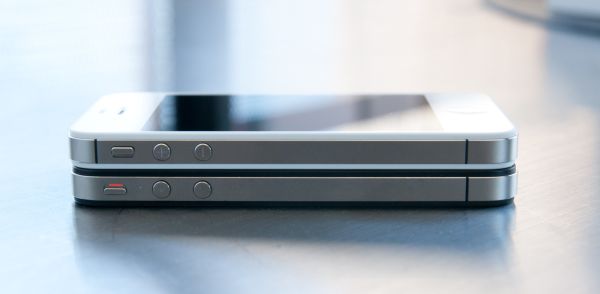
Top: iPhone 4S, Bottom: iPhone 4
The long and short of this change is that the notches have been moved around to accommodate a design with two cellular antennas. One is up at the very top, the other is at the very bottom - the two are the small U shaped portions. The result of this change is that the 4S has a very symmetrical design, as opposed to the GSM/UMTS 4’s asymmetric layout.
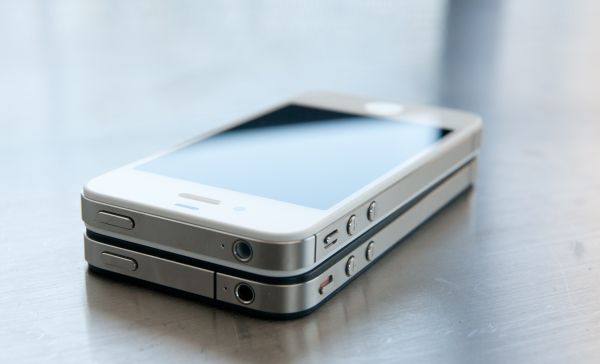 Top: iPhone 4S, Bottom: iPhone 4
Top: iPhone 4S, Bottom: iPhone 4
Just like the CDMA iPhone 4, the 4S also moves the vibrate/lock switch down the device just slightly to accommodate the new break for the top antenna band. This is the physical change that breaks compatibility with cases designed for the older GSM/UMTS iPhone 4. If you recall previously, however, Apple refreshed its bumpers with a new “Universal” line around the time of the CDMA iPhone 4 launch. At that time, case makers also followed suit with a larger vibrate/lock switch port. The result is that if you have a “universal” case created after the launch of the CDMA iPhone 4, you likely won’t need a new one for the 4S.
I say likely because some cases that cover the front of the 4S and are universal might not work as well owing to a small change in the placement of the 4S’ ambient light sensor. It’s going to be a case by case basis to determine which 4 cases that cover the front of the display work with the 4S.
The rest of the 4S exterior is superficially identical to its predecessor, which has become something of a point of contention for shoppers who like being able to identify themselves as owning a 4S, as opposed to a 4. There are, however, subtle differences you can leverage to tell the 4S from its two 4 brethren. The 4S includes the regulatory (FCC, recycling, European Conformity, e.t.c.) logos below its model numbers and FCC ID. The CDMA 4 doesn’t include those logos. Again, the GSM/UMTS 4 is alone with its three-notch stainless steel bands. It is admittedly curious that Apple hasn’t decided to make some other larger change to distinguish the 4S from the other two - there’s no mention of 4S anywhere on the phone. The iPhone 3G and 3GS were famously distinguished from each other by the inclusion of chrome iconography on the back. I fully expect Apple to update their identifying iPhone page with basically the above information at some point in time, but to say that the 4S is identical to the previous device is disingenuous.
The 4S design is without a doubt, however, an evolution of the CDMA iPhone 4’s design. Like the latter, the 4S includes the same improved vibration unit instead of the counterweight vibrator that most smartphones include. The result is a virtually silent, completely smooth vibrate, instead of the louder rattle and sharp acceleration that accompanies the counterweight vibration. The result is much less conversation-interrupting noise when the 4S vibrates during a call, and less intrusive notification.
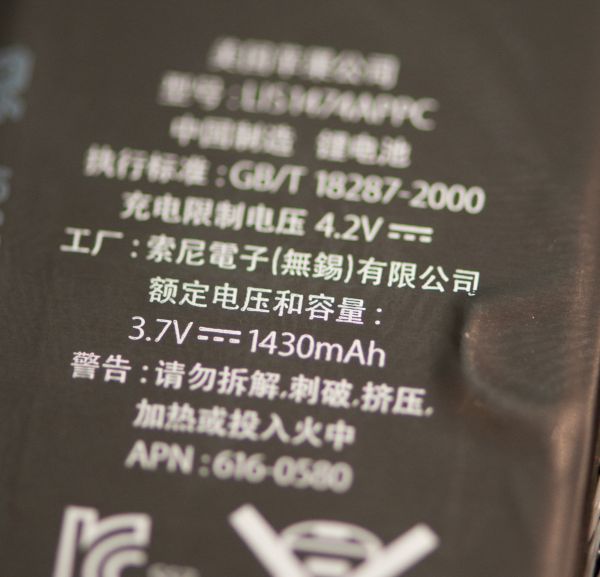
Battery capacity up to 1430 mAh
The other subtle change is an extremely small jump in battery capacity, from 1420 mAh in the 4 to 1430 mAh in the 4S. This is a very small change that boosts the capacity in watt-hours from 5.25 to 5.3. In addition the 4S puts on a little bit of weight, from 137 to 140 grams, but again nothing major.
Even the 4S packaging is basically the same as prior versions, including the same design and contents. Inside you get the phone, dock cable, headset mic, and the same smaller 5V, 1A charger that came with the 4.
| Physical Comparison | |||||||
| Apple iPhone 4 | Apple iPhone 4S | HTC Sensation | Samsung Galaxy Nexus | Samsung Galaxy S 2 | |||
| Height | 115.2 mm (4.5") | 115.2 mm (4.5") | 126.3 mm (4.97") | 135.5 mm | 125.3 mm (4.93") | ||
| Width | 58.6 mm (2.31") | 58.6 mm (2.31") | 65.5 mm (2.58") | 67.9 mm | 66.1 mm (2.60") | ||
| Depth | 9.3 mm ( 0.37") | 9.3 mm ( 0.37") | 11.6 mm (0.46") | 8.94 mm | 8.49 mm (0.33") | ||
| Weight | 137 g (4.8 oz) | 140 g (4.9 oz) | 148 g (5.22 oz) | 135 g | 115 g (4.06 oz) | ||
| CPU | Apple A4 @ ~800MHz Cortex A8 | Apple A5 @ ~800MHz Dual Core Cortex A9 | 1.2 GHz Dual Core Snapdragon MSM8260 | 1.2 GHz TI OMAP 4460 Dual Core Cortex A9 | 1.2 GHz Exynos 4210 Dual Core Cortex A9 | ||
| GPU | PowerVR SGX 535 | PowerVR SGX 543MP2 | Adreno 220 | PowerVR SGX 540 | ARM Mali-400 | ||
| RAM | 512MB LPDDR1-400 | 512MB LPDDR2-800 | 768 MB LPDDR2 | 1GB LPDDR2 | 1 GB LPDDR2 | ||
| NAND | 16GB or 32GB integrated | 16GB, 32GB or 64GB integrated | 4 GB NAND with 8 GB microSD Class 4 preinstalled | 16GB or 32GB NAND integrated | 16 GB NAND with up to 32 GB microSD | ||
| Camera | 5MP with LED Flash + Front Facing Camera | 8MP with LED Flash + Front Facing Camera | 8 MP AF/Dual LED flash, VGA front facing | 5 MP AF with LED flash, 1.3MP front facing | 8 MP AF/LED flash, 2 MP front facing | ||
| Screen | 3.5" 640 x 960 LED backlit LCD | 3.5" 640 x 960 LED backlit LCD | 4.3" 960 x 540 S-LCD | 4.65" 1280 x 720 Super AMOLED | 4.27" 800 x 480 SAMOLED+ | ||
| Battery | Integrated 5.254Whr | Integrated 5.291Whr | Removable 5.62 Whr | Removable 6.475 Whr | Removable 6.11 Whr | ||


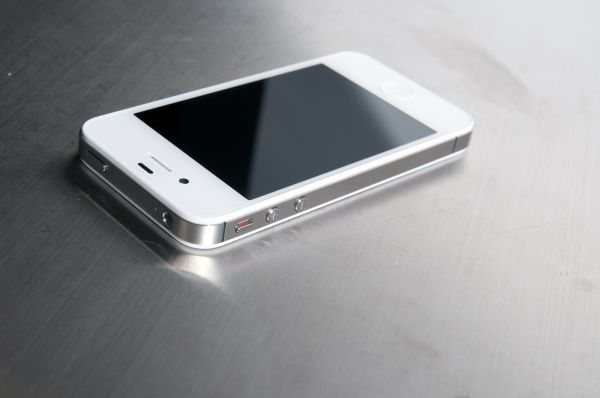

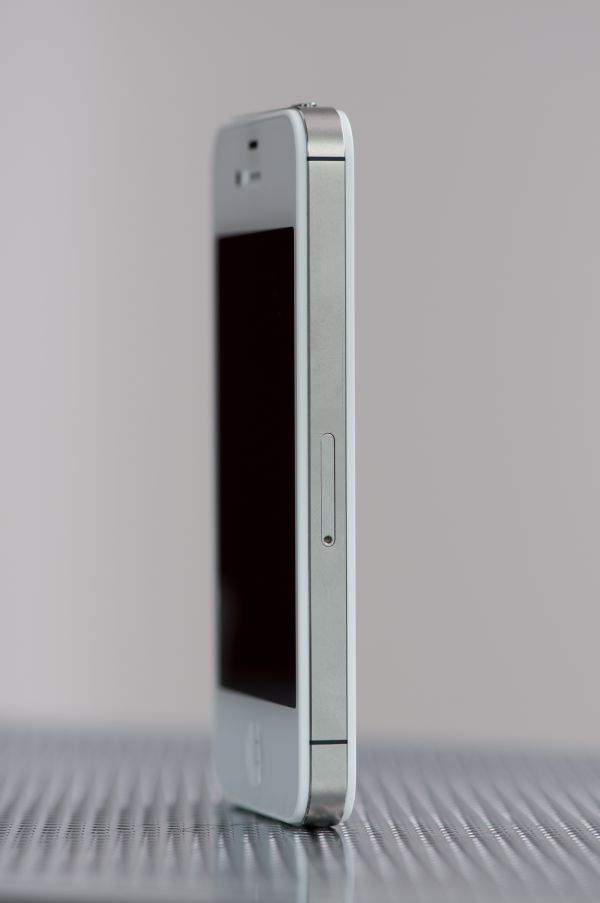














199 Comments
View All Comments
Pata - Tuesday, November 1, 2011 - link
Will these factors (bluetooth and gps) be incorporated in future tests? I now keep bluetooth and the gps on for Siri and geofenced reminders. I'm guessing that Android phone users might be soon be using bluetooth more often as well, given all the bluetooth watch accessories that will soon be available for their platform. With bluetooth and gps left on, with find my friends, reminders all running in the background, my iPhone usually doesn't last anywhere up to 9 hrs of usage.DukeN - Tuesday, November 1, 2011 - link
Thanks Anand for reviewing every single Apple, iOS, Android/Droid major and minor update since the summer. How about we perhaps devote 2 frickin pages to cover/preview/benchmark some of the newest Blackberry devices?Heck you even covered turds like the HP Veer, and Windows Phone devices.
Perhaps we can devote a couple of pages to the smartphones that have a quarter of the market?
Thanks
jamyryals - Tuesday, November 1, 2011 - link
Even as a [forced] Blackberry user, I'd rather they didn't spend their time reviewing Blackberry devices.Also, it is "biased" in that case.
SicMX - Tuesday, November 1, 2011 - link
Fantastic review, keep up the good work!PS. Especially appreciated the in-depth review regarding the camera + image quality.
Matt Campbell - Tuesday, November 1, 2011 - link
Nice article Brian, Anand. One clarification for Page 8, Siri can't read emails - only incoming (new) text messages. She'll tell you this herself if you ask her to read your emails :)And one comment, the addition of Bluetooth 4.0 is a big leap forward in my opinion. The Bluetooth stack in every other iPhone revision was missing the Serial Port Profile stack, which severely limited hardware developers. Since the 4S is "Bluetooth Smart Ready", it should support all kinds of fun new sensors and gadgets without the need for additional hardware.
_tangent - Tuesday, November 1, 2011 - link
Great in depth review! Anandtech is one of the only places you can find this sort of analysis, and for the technically minded consumer, it's an invaluable resource. Kudos!I'm a bit confused by the GPU arms race in the mobile space. Aren't we reaching a point where the screen is small enough and far enough away from your face that the law of diminishing returns applies? Unless the ultimate objective is to have us all connect our phones to tvs or other displays for gaming on a larger scale.
I'm not sure where i stand on mobile gaming these days. I have a relatively capable android handset, but find myself not even playing the 3D games already available. Not because they aren't good or pretty enough, just because intensive 3d gaming slams my battery, is less well suited to the odd 5 minute opportunity i get to game on the go, and the lack of physical controls for more "conventional" games is often frustrating. In any case, having lived with the handset for 6 months or so, i'm not clamoring for better 3D performance. Maybe plenty of people are though.
I'm not personally a fan of Apple products. Not because they don't offer a great UX and aren't well polished in their own right, but because the cost apparently associated with that is too high. As a software developer by trade I find their draconian, fascist approach to the appstore and development in general somewhat distasteful. I don't equate choice and flexibility with complexity. That said, i don't mind Apple in a world where they have competitors offering an alternative philosophy This drives everyone to innovate which is great for us as consumers.
Hopefully ICS will bring Android up to par with iOS from a UX point of view, whilst retaining the flexibility and customization that much of it's user base has come to appreciate. I look forward to a similarly comprehensive look at the Galaxy Nexus and other ICS phones as they're released!
Shinobi123 - Tuesday, November 1, 2011 - link
Why is the New Razr missing from most of the graphs? It was in the first few, basically the only reason I kept reading this article.. But it wasn't included in any. :(tipoo - Tuesday, November 1, 2011 - link
They probably aren't done testing it.rimshaker - Tuesday, November 1, 2011 - link
As usual, the very best in depth product review available. As a EE, no review is ever thoroughly complete until I read it here on Anandtech. Wonderful!My only question is how to display the numerical wifi RSSI without using 3rd party apps? I tried it in field test mode but the wifi icon never changes like the cell signal does.
dubthedankest - Tuesday, November 1, 2011 - link
I second this question as well as the one prior on how to enable the numerical RSSI for WiFi - that would be very helpful.Great review!